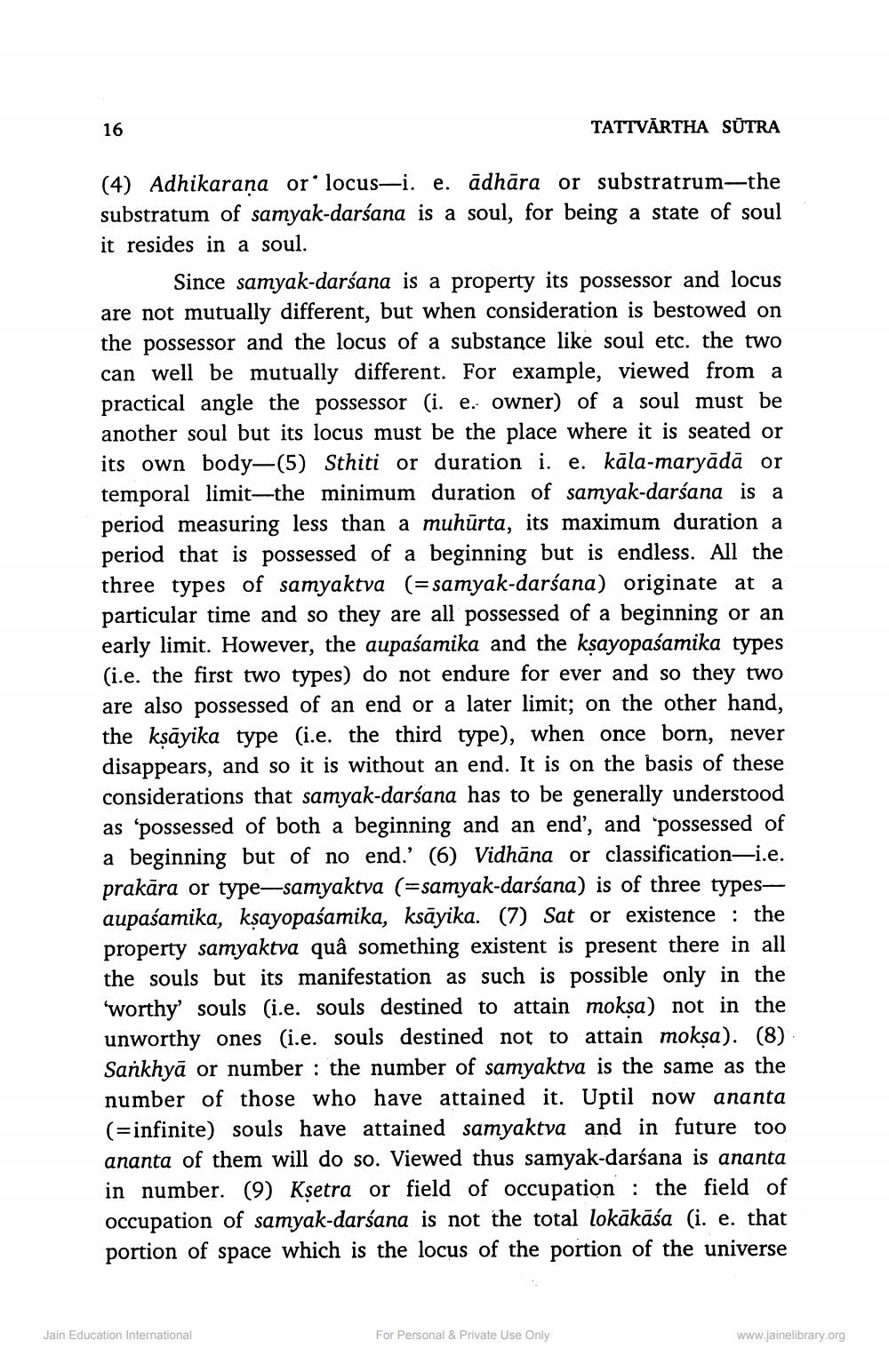________________
16
TATTVĀRTHA SŪTRA
(4) Adhikarana or locus—i. e. ādhāra or substratrum—the substratum of samyak-darśana is a soul, for being a state of soul it resides in a soul.
Since samyak-darśana is a property its possessor and locus are not mutually different, but when consideration is bestowed on the possessor and the locus of a substance like soul etc. the two can well be mutually different. For example, viewed from a practical angle the possessor (i. e. owner) of a soul must be another soul but its locus must be the place where it is seated or its own body—(5) Sthiti or duration i. e. kāla-maryādā or temporal limit—the minimum duration of samyak-darśana is a period measuring less than a muhūrta, its maximum duration a period that is possessed of a beginning but is endless. All the three types of samyaktva (=samyak-darśana) originate at a particular time and so they are all possessed of a beginning or an early limit. However, the aupaśamika and the kşayopaśamika types (i.e. the first two types) do not endure for ever and so they two are also possessed of an end or a later limit; on the other hand, the kṣāyika type (i.e. the third type), when once born, never disappears, and so it is without an end. It is on the basis of these considerations that samyak-darśana has to be generally understood as 'possessed of both a beginning and an end', and 'possessed of a beginning but of no end.' (6) Vidhāna or classification—i.e. prakāra or type-samyaktva (=samyak-darśana) is of three types— aupaśamika, kşayopaśamika, ksāyika. (7) Sat or existence : the property samyaktva quâ something existent is present there in all the souls but its manifestation as such is possible only in the 'worthy' souls (i.e. souls destined to attain mokṣa) not in the unworthy ones (i.e. souls destined not to attain mokşa). (8) Sankhyā or number : the number of samyaktva is the same as the number of those who have attained it. Uptil now ananta (=infinite) souls have attained samyaktva and in future too ananta of them will do so. Viewed thus samyak-darśana is ananta in number. (9) Kșetra or field of occupation : the field of occupation of samyak-darśana is not the total lokākāśa (i. e. that portion of space which is the locus of the portion of the universe
Jain Education International
For Personal & Private Use Only
www.jainelibrary.org




